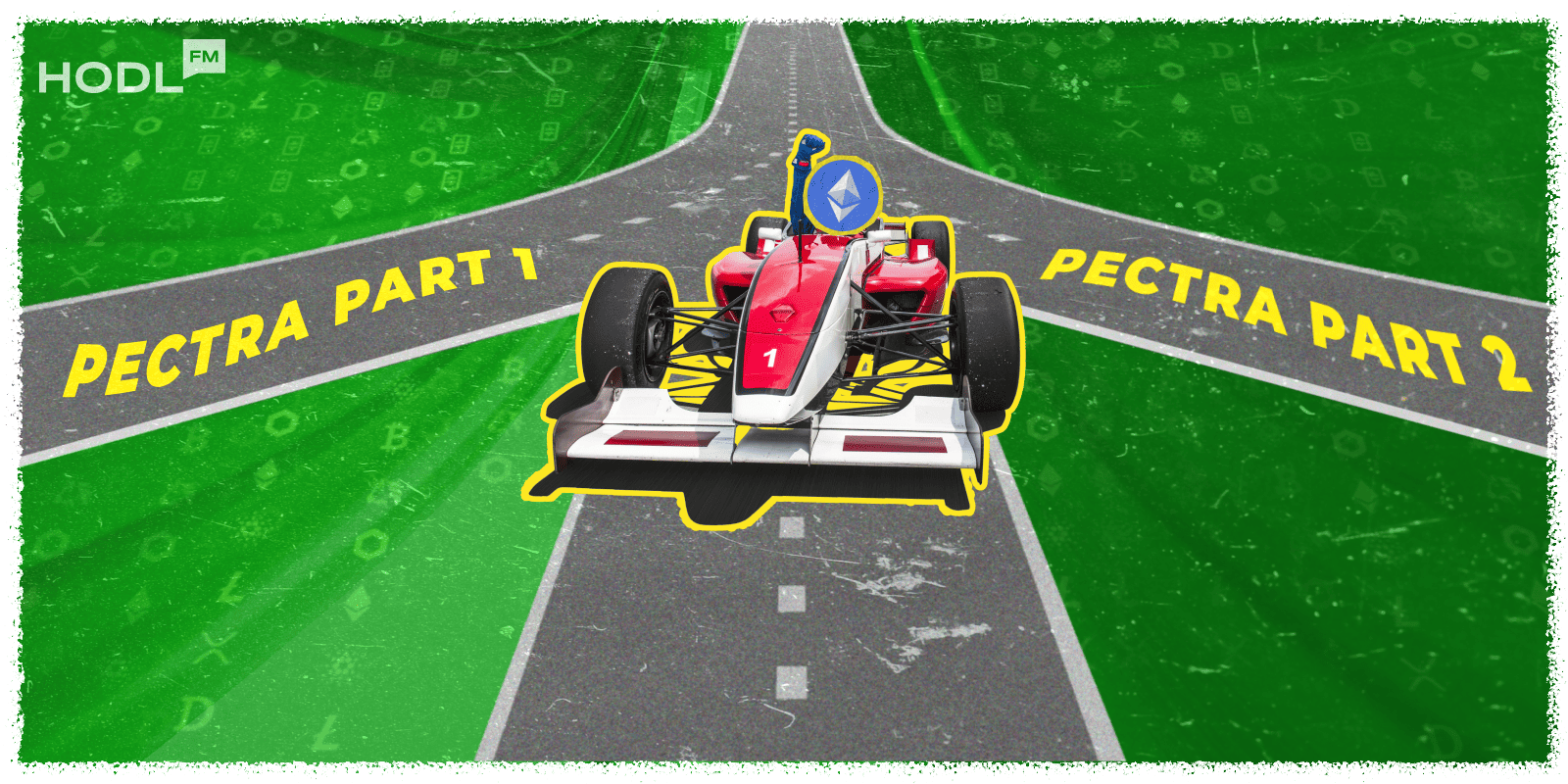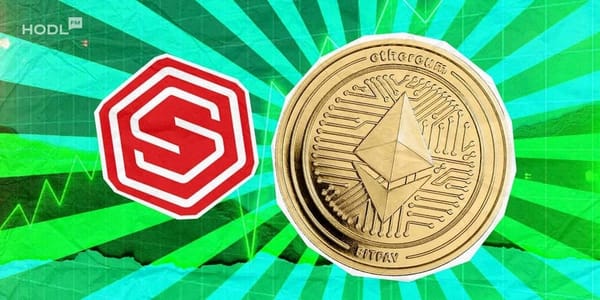Ethereum is preparing for a major upgrade known as the Pectra Upgrade. This is big news, as it’s the world’s second-largest blockchain by market capitalization. The update is expected to improve the overall user experience on the Ethereum network. The changes aim to address long-standing issues with transaction costs and staking requirements.
Why the Pectra Upgrade Matters
Ethereum has evolved considerably since its launch in 2015. It has focused on making its network more scalable and user-friendly in the following ways:
- Gas fees: The fees have been a point of frustration for users during periods of high network activity
- Staking: The current system is limited in terms of the minimum stake required to earn rewards
The Pectra Upgrade aims to address these challenges through new Ethereum Improvement Proposals (EIPs), which bring technical changes to the network.
Pectra Upgrade: A Two-Part Series
The Pectra Upgrade will be rolled out in two parts. Splitting the upgrade allows developers to test each phase thoroughly before moving to the next. Here’s a look at what’s included in each part:
- Part One (Early 2025): Focuses on changing how gas fees are paid and making staking more efficient.
- Part Two (2026): Aims to introduce additional tools for developers, further optimize the network, and potentially lower gas fees even more.
Typically, Bitcoin rises in October. However, the recent interest rate cut is yet to have an impact on the market. Perhaps the market is being very cautious ahead of the US presidential election. However, it is believed that Ethereum's Pectra upgrade, which will occur soon, will… pic.twitter.com/xzfN6QteFR
— Derek (@kimmyboy2) October 8, 2024
Key Features of Pectra Part One
The first part of the Pectra Upgrade brings two major improvements that users and validators are eagerly anticipating:
Elimination of ETH-Only Gas Fees (EIP-7702)
- Currently, all gas fees must be paid in ETH. This means that users need to keep some ETH in their wallets specifically to cover transaction costs.
- Ethereum users will have the flexibility to pay gas fees using a variety of cryptocurrencies, such as USDC or DAI. This will have a positive impact on businesses and decentralized applications (dApps) that deal with stablecoins or other tokens more frequently than ETH.
- The new system will be more convenient for users who prefer to hold stablecoins instead of Ethereum.
7️⃣ The future of Pectra 🌠
— MemoLabs (@MemoLabsOrg) October 25, 2024
As the #Pectra upgrade approaches, we look forward to how it will shape the future of Ethereum. Not only is this a leap forward in technology, but it's a critical step for Ether to stay ahead of the curve in the #Web3 era.
Enhancement in Staking Rewards for Validators (EIP-7251)
- Until now, staking on Ethereum required a minimum of 32 ETH to operate a validator node and earn rewards. If a user had more than 32 ETH, they had to start additional validator nodes to earn rewards on the extra amount.
- The introduction of EIP-7251 changes this. Validators can earn staking rewards on any amount over 32 ETH without needing to set up multiple nodes.
- The update enables validators to maximize their earnings without needing to manage multiple validator nodes.
How the Pectra Upgrade will Affect Everyday Ethereum Users
The changes brought by the Pectra Upgrade are set to have a big impact on how people interact with the Ethereum network. Here’s what these updates mean for users:
A. Flexibility with Gas Fees
- The ability to pay gas fees using other cryptocurrencies is a major win for users who want a more flexible experience on Ethereum. It also reduces the need for keeping ETH just to cover transaction costs
- This change also makes Ethereum more attractive to users who were previously put off by the need to manage an additional token for gas fees.
B. Simplified Staking Process
- For those involved in staking, the Pectra Upgrade allows validators to earn rewards on any amount over 32 ETH. This means fewer validator nodes to set up, lower costs, and potentially higher rewards.
- This change also opens the door for more institutional investors to participate in staking, as they can now stake larger amounts more efficiently.
The Future of Ethereum Staking and Rewards
The Pectra Upgrade has the potential for automated, permissionless staking pools. Currently, services like Rocket Pool and Lido allow users to participate in staking without needing to run their own validator nodes. However, these services involve some manual management such as handling deposits and withdrawals.
Fully Automated and Permissionless ETH Staking Pools
With the Pectra Upgrade, Ethereum could see the introduction of fully automated staking pools. As a result, users can stake their ETH with less hassle. Automation makes staking more user-friendly and could attract more casual users who may have been hesitant to participate before.
Looking Ahead: Pectra Part Two and Beyond
While the focus of the first part of the Pectra Upgrade is on gas fees and staking, Part Two will bring additional improvements:
- Lower Gas Fees: Part Two could introduce new mechanisms that optimize transaction processing and make Ethereum transactions more affordable.
- Developer Tools: Developers can expect new features that simplify the process of writing smart contracts and interacting with the Ethereum network.
Conclusion: A New Era for Ethereum
The Pectra Upgrade is a significant step forward for Ethereum. It will make gas fees more flexible and improve staking rewards. The changes make Ethereum more accessible and user-friendly. They can also pave the way for a more efficient blockchain network.
As Ethereum continues to evolve, users and developers have much to look forward to due to convenient transaction options and better staking opportunities. Going forward, the future of Ethereum looks brighter than ever.

FAQs
What is the Ethereum Prague upgrade?
The Prague upgrade is a previous Ethereum update focused on making the network more scalable and improving its Proof of Stake system.
What is Pectra Ethereum?
Pectra is an upcoming Ethereum upgrade that focuses on improving gas fees, staking, and overall network efficiency.
What is the Ethereum upgrade 2025?
The Ethereum upgrade planned for 2025 is the first part of the Pectra Upgrade, which introduces new changes to gas fees and staking.
What is an Ethereum upgrade?
An Ethereum upgrade is a set of changes or improvements to the Ethereum blockchain. It is designed to make it more secure, efficient, and user-friendly.
What changes can users expect in the first part of the Pectra upgrade?
The first part of the Pectra upgrade will introduce several key changes, including the elimination of the need to hold ETH for gas fees on Ethereum and many layer-2 networks, and enhancements allowing Ethereum stakers to earn rewards on sums greater than 32 ETH.
How will the Pectra upgrade affect gas fees?
One of the proposals, EIP-7702, included in the first part of Pectra, will allow users to pay gas fees with other cryptocurrencies, potentially ending the need to hold ETH for gas fees. This could significantly improve user experience by offering more flexibility in transactions.
What is account abstraction, and how does it relate to the Pectra upgrade?
Account abstraction, introduced through EIP-7702, will allow Ethereum wallets to behave more like smart contracts, enabling third parties to sponsor transactions. This means users could outsource their gas fees to a service and pay in a different cryptocurrency, such as USDC.
How will Ethereum staking change with the Pectra upgrade?
The Pectra upgrade will introduce EIP-7251, allowing Ethereum stakers to earn proportional yield on any deposited sum over 32 ETH. This change enables users to consolidate validators, potentially increasing their voting power and reward accumulation.
What are the potential future changes in the second part of the Pectra upgrade?
While details are still emerging, the second part of the Pectra upgrade is expected to include major proposals like an EVM Object Format (EOF) to increase the efficiency and safety in writing smart contract code, and PeerDAS, which could further reduce layer-2 gas fees.
When can we expect the complete implementation of the Pectra upgrade?
The first part of the Pectra upgrade is set for early 2025, but the complete implementation, including the second part, might extend into 2026. This timeline allows Ethereum’s developers to carefully integrate and test each feature.
How will the Pectra upgrade impact the overall Ethereum network?
The Pectra upgrade is expected to significantly improve the Ethereum network's efficiency, reduce gas fees, and enhance staking rewards, contributing to a more flexible, efficient, and user-friendly blockchain ecosystem.
Stay tuned for further updates as Ethereum continues to evolve with the ambitious Pectra upgrade, promising a brighter future for all users and developers in the ecosystem.

Disclaimer: All materials on this site are for informational purposes only. None of the material should be interpreted as investment advice. Please note that despite the nature of much of the material created and hosted on this website, HODL FM is not a financial reference resource and the opinions of authors and other contributors are their own and should not be taken as financial advice. If you require advice of this sort, HODL FM strongly recommends contacting a qualified industry professional.




